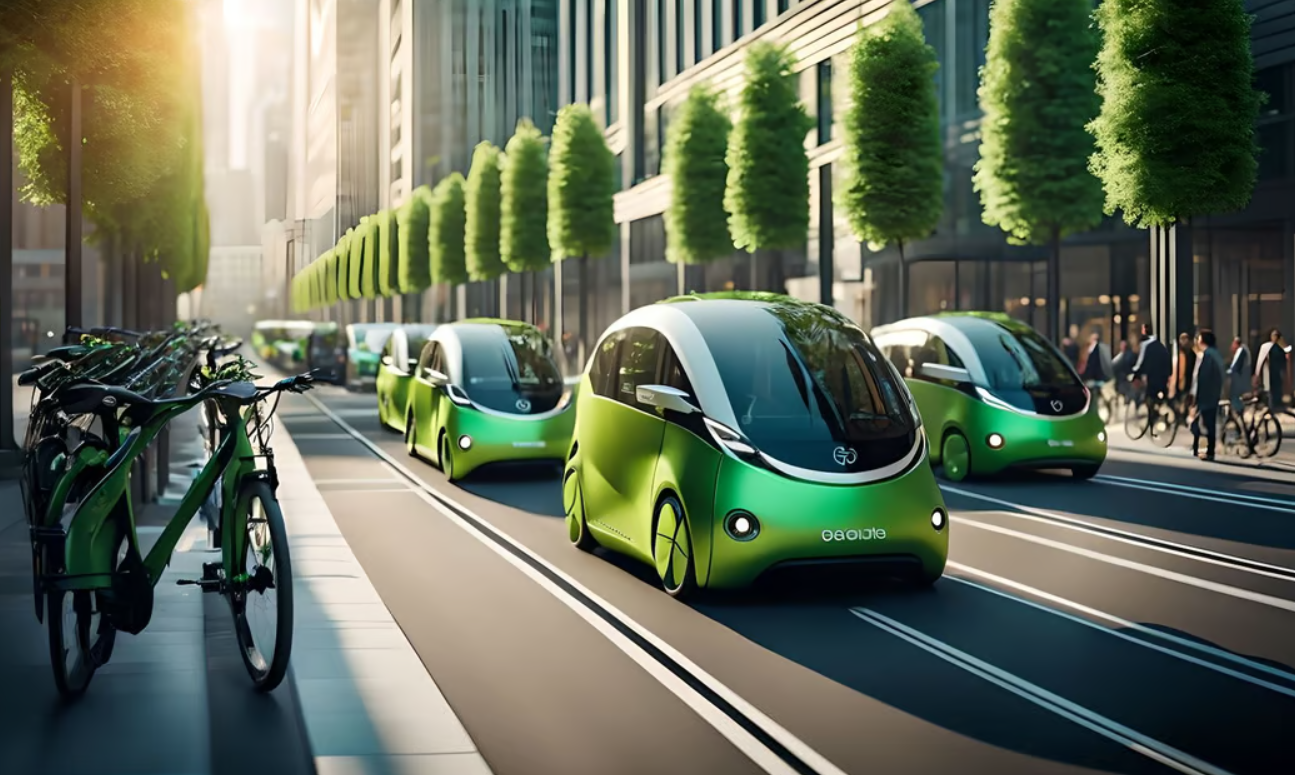Physical Address
304 North Cardinal St.
Dorchester Center, MA 02124
Physical Address
304 North Cardinal St.
Dorchester Center, MA 02124

Electric vehicles (EVs) are no longer just a vision of the future—they are now a transformative force in global transportation. This article explores how EVs are revolutionizing the way we move and the significant benefits they offer to both the environment and society.
We are witnessing a profound transformation in how people and goods are transported, with electric vehicles at the forefront of this change. Offering a cleaner, more sustainable alternative to traditional internal combustion engine vehicles, EVs have gained significant traction in the automotive industry. Powered by rechargeable batteries, EVs eliminate the need for gasoline or diesel, representing a critical shift towards reducing carbon emissions and combating climate change. As technological advancements continue and environmental awareness grows, governments, industries, and consumers alike are increasingly embracing the importance of sustainable transportation, leading to a rapid rise in EV production and adoption.
One of the most compelling advantages of electric vehicles is their positive impact on the environment. EVs produce zero tailpipe emissions, significantly reducing air pollution and improving urban air quality. This is especially important in densely populated areas, where traditional vehicles contribute to smog and related health issues. Additionally, EVs are much quieter than conventional vehicles, helping to reduce noise pollution in cities and neighborhoods.
Electric vehicles also boast superior energy efficiency. They convert a higher percentage of grid energy into power at the wheels compared to internal combustion engines, making them more efficient and cost-effective to operate. This efficiency reduces reliance on fossil fuels and supports greater energy independence. Furthermore, while the initial purchase price of an EV may be higher than that of a traditional vehicle, the savings on fuel and maintenance costs make EVs a more economical choice over their lifetime. With fewer moving parts and simpler maintenance requirements, EV owners enjoy lower upkeep costs and extended vehicle lifespans.
Despite their numerous benefits, electric vehicles still face challenges that could hinder widespread adoption. One of the main concerns for potential EV owners is range anxiety—the fear of running out of battery power before reaching a charging station. However, continuous advancements in battery technology are extending the driving range of EVs, gradually alleviating this issue.
Another significant hurdle is the availability of charging infrastructure. The convenience and practicality of EV ownership depend on a robust network of charging stations, especially fast chargers. To address this, governments and private companies are investing heavily in expanding the charging infrastructure, making it easier for more people to transition to electric transportation.
Additionally, the recycling and disposal of lithium-ion batteries used in EVs present environmental challenges. However, ongoing efforts are focused on developing sustainable recycling processes to minimize environmental impact and promote a circular economy for EV components.
To encourage the adoption of electric vehicles, many governments around the world are offering a variety of incentives and policy support. These incentives include tax credits, rebates, and subsidies for EV purchases, as well as perks like access to carpool lanes and free parking in certain cities. By incentivizing consumers to choose electric vehicles, governments aim to accelerate the shift towards cleaner transportation and reduce greenhouse gas emissions.
Beyond incentives, policymakers are implementing stricter emissions regulations for automakers, pushing them to produce more EVs and reduce the transportation sector’s carbon footprint. Programs such as zero-emission vehicle mandates compel manufacturers to increase their EV offerings and invest in sustainable technologies.
The future of transportation is undoubtedly electric, with projections indicating a significant increase in electric vehicle sales in the coming years. Automakers are ramping up production and introducing new EV models to meet the growing demand for sustainable mobility solutions. Additionally, advancements in autonomous driving technology and vehicle-to-grid integration are poised to redefine how electric vehicles are used and incorporated into smart grids.
As battery technology continues to evolve, electric vehicles will become more accessible and practical for a broader range of consumers. The electrification of public transportation—such as buses and trains—will further contribute to reducing emissions and enhancing the sustainability of urban mobility.
The shift towards electric vehicles carries profound implications for both the environment and society. By reducing greenhouse gas emissions and air pollutants, EVs play a crucial role in mitigating climate change and improving air quality. The transition to electric transportation also helps to reduce noise pollution, making cities quieter and more livable.
Socially, EVs promote energy independence and security by decreasing reliance on imported fossil fuels. Moreover, the growth of the electric vehicle and renewable energy sectors is driving innovation, creating jobs, and stimulating economic growth. The widespread adoption of EVs marks a significant move towards a more sustainable and resilient transportation system, benefiting both current and future generations.
The rise of electric vehicles represents a pivotal moment in the journey toward a cleaner, more sustainable future. With their environmental benefits, energy efficiency, and lower operating costs, EVs are transforming how we travel and reshaping the automotive industry. As the electric revolution accelerates, continued investment in infrastructure, technology, and policy support will be key to fully realizing the potential of electric mobility and building a greener tomorrow.